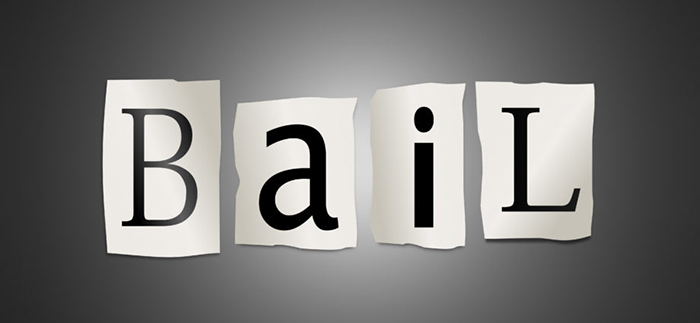Getting arrested is confusing, embarrassing, scary, infuriating, inconvenient and expensive. Fortunately in the US we have a bail system that allows the accused to secure their release while awaiting their day in court. In some cases bail may only be a couple of hundred bucks. In other cases however, it may be $50,000 or more, depending on the charge.
In most cases where large amounts of money are involved it’s common for the accused to contact a loved one who, in turn, contacts a bail bondsman for assistance. But how is the amount of the bail determined in the first place? Do the police just pull a number out of thin air? Not exactly. In most cases the amount is predetermined and specified on what’s called a “bail schedule”.

What’s a Bail Schedule?
A bail schedule isn’t like a train schedule. It’s more like a menu that lays out the list of offences and the bail amount for each. These bail amounts often differ from jurisdiction to jurisdiction so how much bail you actually pay may well vary depending on whether you were arrested in Adams County, Broomfield County, Weld County or Denver.
The way things typically work is that the suspect is brought into the jail and processed. After that the bail schedule is referenced and the accused is informed of the bail amount. They then have the option to pay the amount on the spot (an increasing number of jails accept credit cards), call a relative or friend to come pay the amount or ask that relative or friend to contact a bail agent to post a bond.
As you may have guessed the more serious the crime the higher the recommended amount on the bail schedule, with some Class A felonies being non-bailable offences.
Organization of the Bail Bonding Schedule
Since there is no such thing as a national bail schedule, or even a statewide bail schedule, the organization of schedules will vary from jurisdiction to jurisdiction. Most, however, are comprised of two sections: felonies and misdemeanors.
- Felonies are more often than not the first type of offence on the schedule. Felonies are those crimes that carry a minimum sentence of one year in prison. Felonies often (though not always) involve violence of some kind.
- Misdemeanors usually follow felonies on the bail schedule. Misdemeanors are typically defined as any crime which carries a maximum jail sentence of less than one year.
The most serious felonies are Class A felonies including first degree murder, which tops the schedule and is not eligible for bail. From there the list moves incrementally to the least serious felonies at the bottom such as resisting arrest.
Misdemeanors may include anything from resisting arrest to creating a public nuisance. As with felonies, the most serious misdemeanors are at the top and the least serious at the very bottom of the bail schedule.
In the event a person has been charged with a misdemeanor or even a Class D felony like solicitation they may be given the opportunity to bail themselves out shortly after being processed at the jail. For more serious offences though they may have to wait until they are arraigned before a judge.
The judge will use the bail schedule as guidance but is free to either increase or decrease the amount at their discretion. Generally, a repeat offender - particularly one who has skipped bail before - will have the bail amount increased or be held without bail. While a non-violent first time offender may have the bail amount reduced or be released on their own recognizance.
Proceeding Once the Bail Amount is Determined
Once an appropriate bail amount has been determined either by authorities at the jail referencing the bail schedule or the judge, either applying the bail schedule recommendations verbatim or altering the recommended amount, the accused has three paths open to them:
- Path One: Remain in Jail - Path one comes into play when the defendant either can’t meet the bail demand or simply chooses to remain in custody while awaiting trial. For whatever reason an increasing number of suspects are not bailing themselves out or being bailed out by a loved one
- Path Two: Pay the Full Bail Amount- Once bail has been set the defendant has the option to pay the amount in full and gain their release. When bail amounts are relatively low many defendants choose this option. An increasing number of jails are accepting credit card payments for bail. A practice that is not without its critics. In those cases the jail uses the bail schedule to set bail and the accused simply swipes their credit card and, if approved, is free to walk.
- Path Three: Hire a Bail Bonds Agent - This is by far the most common path chosen by those under arrest. If the bail amount is more than the accused can pay on their own they will typically phone a loved one and ask for their help. The loved one will then contact a bail bonds agent who, in return for a non-refundable fee (usually 10% of the total bail amount), will post a bond that results in the accused being released.
Conclusion
The Bail Schedule is an important tool used by both jails and the courts to streamline the bail process. While many jails employ it as is, judges are free to disregard the recommendations of the bail schedule and set what they feel is a more appropriate bail amount.